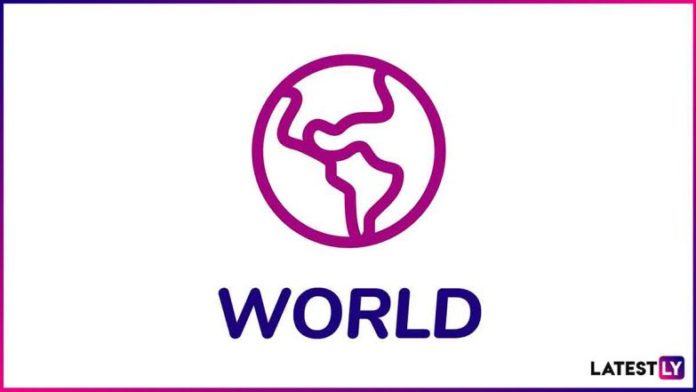[ad_1]
TOKYO, Feb. 27 (360info) — Cheap, portable sequencing machines in poor countries could hold the key to identifying and stopping emerging diseases before they have the chance to become pandemics.
The cost of decoding a person’s entire genome has plummeted, paving the way for improved disease surveillance. Lower costs have made the technology accessible to people living in poorer economies, hopefully enabling faster detection and characterization of emerging diseases.
Read also | The U.S. Department of Energy says the COVID-19 pandemic is the result of a leak in a Chinese lab.
The human body is the custodian of information. Each of our 30 trillion cells gives or takes information about how the body’s machinery works, and passes that information on to the next generation in strings of code using just the four letters ACGT.
Each represents a molecule called a nucleotide. The total length of this string is about 6 billion letters, condensed into the 23 pairs of chromosomes that make up DNA.
Read also | Tibet has lowest literacy rate of all Chinese provinces: Delhi think tank.
Seventy years ago, James Watson and Francis Crick discovered the shape of DNA and how the ACGT code fits together. All organisms can be identified by reading their DNA code, or in some organisms, their RNA (called the genome).
In the 1970s, Frederick Sanger developed a method called sequencing to read this code. Reading a person’s DNA for the first time is laborious; reading most of those 3 billion letters takes about 10 years.
Sequencing is now routinely performed for a variety of purposes, from pathogen detection to determining drug resistance to understanding disease pathogenesis. The amount of data that sequencers can generate has grown exponentially: A single platform can sequence the entire genomes of eight people in 72 hours or less. In the 2022 report, the Sanger Institute sequenced 243,633 human genomes in a record 3.5 years. The enormous data yields help keep sequencing costs down to $600 per genome.
A sequencing platform has been miniaturized by using nanometer-sized proteins. Using a technique called nanopore sequencing, the sequencer can be shrunk down to the size of a chocolate bar. With portability, researchers can take the sequencer to the field and sequence the samples where they obtained them. It also eliminates the logistics of transporting samples to sequencing centers in more developed countries.
Only data can be uploaded to the cloud for analysis elsewhere in the world. But the best part about this miniaturization is that the investment starts at $1,000.
This opens up many possibilities for disease surveillance. Blood samples can be sequenced to detect the presence of genes for disease-causing agents, such as bacteria or viruses, in sick people or even those without symptoms.
Whether a pathogen is resistant to drugs can be determined by reconstructing the genome of the pathogen after sequencing. Information on drug resistance is available in less than half a day. Compare this to the standard process of identifying TB drug resistance, which takes two weeks to get results.
Drug resistance in Plasmodium falciparum is very important today because it has become resistant to almost all antimalarial drugs. Because parasites cannot be tested for traditional drug resistance in the laboratory, identifying mutation-causing drug resistance through sequencing is critical. Another benefit of reading long DNA sequences with portable sequencers is the ability to construct the entire genome of a pathogen, even if the infecting organism is not known in advance.
It is not limited to infectious diseases. Although portable sequencing cannot output a complete human genome, by using targeted sequencing, the signal from one or more specific genes can be pre-amplified, and mutations or alterations in human genes can be studied.
In non-small cell lung cancer, mutations at the amino acid level of genes can lead to resistance to specific inhibitors. The fastest way to identify the likelihood of failure is to detect mutations and modify therapy based on this information.
Portable sequencing could usher in the advent of personalized medicine, tailoring therapies based on genomic information rather than empirical methods. Every clinic now has the capacity to do sequencing.
However, the widespread availability of sequencing has its downsides due to its low cost. DNA sequences are identities. Sensitive information about individuals is stored in their DNA. Anyone with a sequencing machine can see cancer-causing mutations or other alterations that might predispose a person to chronic disease. Information that could lead to stigma may be readily available in DNA, such as information about asymptomatic HIV infection. Previously, information was limited to the diseases being screened for. Now, cheap genome sequencers can easily build a complete picture of a person’s health.
The handling of genome sequences, especially whole genomes, must be strictly regulated like other sensitive information. While portable sequencers are not yet capable of outputting information about the size of the human genome, that time may soon be here. At the same time, even partial human DNA information must be handled with care. Patients must also be informed and given choices about what to do with their information.
As humans encroach on previously wild areas, scientists expect more new diseases to make the leap from the animal world to humans. Inexpensive, portable sequencers in these areas could hold the key to identifying and stopping emerging diseases before they have the chance to become pandemics. Nonetheless, the convenience of sequencing must be accompanied by strict data protection policies to prevent the leakage of sensitive information. (360info.org)
(This is an unedited and auto-generated story from a Syndicated News feed, the content body may not have been modified or edited by LatestLY staff)
share now
[ad_2]
Source link



